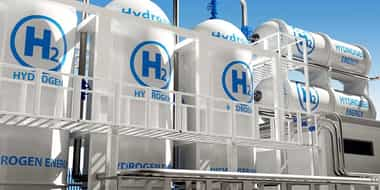
May 2, 2019
Blog Energy & Sustainability , Materials Q&A With Our Lithium Batteries Market Expert Part 2
Check out Part 2 of our Q&A with lithium battery market expert Christopher Frye, below.
Q: Will incremental improvements in current Li Ion battery technology plus massive economies of scale destroy or delay the introduction of next generation LMB, LSB, and Metal Air batteries much the way c-Si destroyed most of the Thin Film PV industry?
A: My best guess answer to this is probably not. I think there are some differences between what occurred regarding c-Si and thin-film PV. Primarily, battery technologies are a bit more diverse because different battery applications (which are numerous) rely on different types of technologies, which makes it more likely next generation technologies can find a niche.
Q: What is the market for Lithium Ion batteries for undersea applications?
A: In the report, this segment, or sub-segment (no pun intended) would primarily be housed under military applications. This market is expected to grow overall by approximately 7%, slower than the growth in LIB overall.
Q: What are the next three highest potential replacement technologies for the current state of the art Li-ion batteries?
A: The three potential replacement technologies include one that is simply more advanced over traditional Li-ion batteries, or advanced Li-ion batteries which focus on higher voltage systems (4.5-5.0V), Lithium.
The other two I would include here would be solid state and Lithium Air. Why? Other technologies, while perhaps more compelling, would not have as much of an accessible market as the technologies I’ve mentioned (when the technology actually matures).
Roadblocks? Primarily roadblocks are developing prototype that meet requirements without too much compromise regarding other tradeoffs (e.g. battery energy density is increased but risk of overheating is increased - not a solution). Specific roadblocks for solid state, as indicated elsewhere, include impacts on ion transfer, and cost to manufacture.
For Lithium-Air batteries, there has been some discussion around the negative by-products produced by testing these types of batteries in situ. The by-products are produced by lithium ions combining with carbon dioxide and water vapor in the air, essentially gumming up the cathode, becoming completely coated and unable to function.
Q: Thoughts on how new long-lasting high-capacity Nickel Zinc and Zinc Air batteries will compete with Lithium in replacing Lead Acid in motive, marine and data storage segments?
A: Both types of batteries have some advantages over conventional lithium batteries. They have good shelf life; materials are generally low-cost and are more environmentally-friendly. They already compete well in motive applications, and have potential in marine areas, particularly due to a safer set of materials.
Q: Which battery companies are showing the highest/most interesting M&A activity?
A: One such piece of activity, profiled in the report, involved the France-based Total company purchasing SAFT for $1.1 billion, which may be one of the higher valued deals. The deal provided Total with assets associated with advanced lithium-ion batteries for use in energy storage, as Total’s strategy appears to be focused on making a major play in the renewable energy space.
One of the more interesting plays, also covered in the report, though now somewhat historic, is Dyson’s purchase of Sakti3, one of the firms working on solid-state battery development. Dyson was interested in getting into the electric vehicle space (still is in fact), but they ultimately wrote down (or wrote off) their investment in Sakti3.
Q: Except for commercial fleets, given infrastructure requirements, cost and complexity of hydrogen storage, and advances in battery energy density and rapid charge, why would consumers pay more for a more complex and expensive hybrid electric vehicle incorporating a hydrogen fuel cell?
A: While a number of automakers and others are putting more interest into the development of hydrogen-based vehicles, the potential impact to lithium batteries will perhaps be greater than if hydrogen-based vehicle development didn’t exist, but it may be tempered somewhat by the fact that hydrogen-based vehicles will still require some type of battery component.
Consumers would not be purchasing an electric vehicle incorporating a hydrogen fuel cell - they would either buy an electric vehicle or a hydrogen-based vehicle.
Q: Recent studies suggest that given life cycle energy consumption and emissions from the battery supply chain, and the high coal penetration of Asian grids, globally EVs contribute little to GHG emission reductions, or at best have very high cost per ton of GHG reduction. What is the potential for greener LIB supply chains and greener grids in China, India and other Asia markets?
A: Asia is witnessing growth in renewable energy, and outpacing Europe and the US due primarily to projects in China, India, and Australia. However, only 6.8 percent of the region gets electricity from renewable sources, so fossil fuel-based sources continue to be dominant.
While China has touted some of their goals, there has been some backing off recently which may portend challenges in greening Asia. Also, inadequate grid capacity and transmission systems in Asia are hindering renewable energy growth.
Regarding LIB supply chains, this is a much more difficult question to answer. China is certainly interested in developing a full-scale LIB market across the supply chain. This situation changes on an almost weekly basis, but the last data I have for trade flows of lithium suggest that China gets much of it from the lithium triangle (South America) which does have some environmental impacts.
China is also a large importer of cobalt from Africa, which has negative political impacts, well documented at this point. So, I guess I would be cautiously optimistic about the state of the LIB supply chain, though unfortunately, I don’t see this issue getting resolved anytime in the next several years.
Q: For Aerospace, besides drones... What about commercial aircraft batteries? Air Taxis, etc.
A: These sub-segments are all covered in the report under Aerospace and are expected to grow by 9% CAGR between 2018-2023. Aerospace, specifically commercial aircraft, are relatively minor segments overall in the lithium battery space.
Missed Part 1 of our Q&A with Christopher Frye? Read it here.

Electrical switches—devices that control the flow of electricity—are the backbon...

Biophotonics: Technologies and Global Markets (PHO024B)

As the world accelerates toward net-zero emissions, hydrogen, and ammonia have e...

We are your trusted research partner, providing actionable insights and custom consulting across life sciences, advanced materials, and technology. Allow BCC Research to nurture your smartest business decisions today, tomorrow, and beyond.
Contact UsBCC Research provides objective, unbiased measurement and assessment of market opportunities with detailed market research reports. Our experienced industry analysts assess growth opportunities, market sizing, technologies, applications, supply chains and companies with the singular goal of helping you make informed business decisions, free of noise and hype.